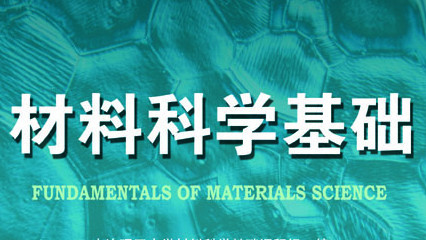
当前课程知识点:Culture and Tourism > Week 2: Mixed Heritage and Cultural Heritage Categories > 2.1 Mixed Culture and Natural Heritage > 2.1.3 Mixed heritage operational guidelines and cases(3)
返回《Culture and Tourism》慕课在线视频课程列表
返回《Culture and Tourism》慕课在线视频列表
到1992年,世界遗产委员会
召开一次专家会议
建议并协助重新起草委员会的业务准则,
将“文化景观”作为遗产清单上
既不是纯自然的也不是纯文化的混合场地的财产的一种选择
因此,世界遗产委员会对
文化景观概念的采用和运用
在世界各地看到了多位专家的身影
许多国家确定了文化景观
评估了文化景观、遗产名录和意义
并有效地使景观为世界所知和可见
产生了非常实际的影响和挑战
文化景观是文化财产
代表《公约》第一条所指定的
“自然与人类的结合作品”
它们说明了人类社会的发展受
They are illustrative of the evolution of human society and settlement over time,
到自然环境和文化力量(内部和外部)
所带来的物质或机会的影响
随着时间的推移而发生的演变
重要的是不要混淆混合性质和文化景观
混合属性在标准1到6中的至少一个
标准7到10中的一个至少相符合,因为它们独立地满足这两个标准
文化景观的突出普世价值
不是来自于其独立评估的文化或自然品质
而是来自于文化与自然的相互关系
文化景观是根据文化标准确定的
这些性质通常具有自然价值
但通常不在自然标准下证明铭文的合理性的水平
在他们这样做的情况下
该财产将作为一个混合地点和一个文化景观.
下面的图表从理论上解释了这组关系
对于一些混合遗产
自然价值观和文化价值观是相互融合、相互依存的
在其他情况下,这些可能不是相互依赖的
而是共享相同的地理位置
所以你可以从这个图表中看到
自然属性,文化属性,混合面和文化景观之间的相互关系
你可以看到,定义一个文化景观
是很有创造性的
最容易辨认的是由人类故意
设计和创造的景观
这包括花园和公园景观,根据建设美学等原因
往往是(与宗教或其他纪念性建筑和合奏)
第二类是有机进化的景观
这源于最初的社会
经济、行政和/或宗教要求
而发展成现在的形式
来源于与自然环境的联系和对自然环境的反应
这些景观在其形态和组成特征上
反映了这一演变过程
它们分为两个子类
我需要强调的是
第一类是遗迹景观是评估
过去某个时间结束的景观
这是它的显著特点
并在物质外在依然可见
第二类是在与传统生活方式密切相关的
当代社会中仍保持着积极的社会作用
并且在这个社会中仍处于进化过程中的一类
同时,它展示了其随时间演变的重要物质证据
第三类是关联文化景观
将这些景观列入《世界遗产名录》是有道理的
因为它们与自然因素有着
强大的宗教、艺术或文化联系
而不是物质文化证据
这些证据可能微不足道,甚至根本不存在
这部分,我们了解了什么是文化景观
之后我给景观例子弄清楚
为什么文化景观会融入到世界健康计划中
然后对文化景观进行了三类划分
下一节,我将讨论几个例子。谢谢你
-1.1 Introduction course outline and UNESCO World Heritage Program
--1.1.1 Introduction of culture and tourism course outline
--1.1.2 Introduction of UNESCO World Heritage Program(1)
--1.1.3 Introduction of UNESCO World Heritage Program(2)
-1.2 Cultural Heritage-1
--1.2.1 The meaning of culture heritage
--1.2.2 Criterion(i): masterpiece of human creative genius
--1.2.3 Criterion(ii): exhibit important interchange of human value
--1.2.4 Criterion(iii): bear a unique or at least exceptional testimony
--How can the public understand the importance of heritage?
-1.3 Cultural Heritage-2
--1.3.1 Criterion(iv): an outstanding example in human history
--1.3.2 Criterion(v): represent a culture or human interaction with environment
--1.3.3 Criterion(vi): associated with living traditions of outstanding universal significance
-1.4 Natural Heritage
--1.4.1 Natural heritage features, formations and criterions
--1.4.2 Cases studies of natural heritage
--Cultural landscape meanings: The case of West Lake, Hangzhou, China
--How to access heritage of your hometown?
-2.1 Mixed Culture and Natural Heritage
--2.1.1 Mixed heritage operational guidelines and cases (1)
--2.1.2 Mixed heritage operational guidelines and cases (2)
--2.1.3 Mixed heritage operational guidelines and cases(3)
-2.2 Authenticity, Integrity and Cultural Routes
--2.2.1 How to determine authenticity and integrity
--2.2.2 Heritage routes and heritage canals (1)
--2.2.3 Heritage routes and heritage canals (2)
--What do you think about cultural heritage categories?
-2.3 Special Heritage and Sustainable
--2.3.1 Physical remains of the history of technology and industry
--2.3.2 Transboundary Heritage, Serial Heritage, Serial/Transnational Heritage
--2.3.3 Intangible cultural heritage
--2.3.4 UNESCO World Heritage and Sustainable Tourism Programme
--Recovering the Memory of Ourselves for the Sustainable Cites
--Week 2 quiz
--What do you think about cultural heritage categories?
-3.1 The Australia’s Heritage System and Sydney Opera House
--3.1.1 The Australian Heritage System
--3.1.2 Case Study: The Sydney Opera House
-3.2 Role of the ISCCL and Cultural Landscape (1)
--3.2.2 Uluru-Kata Tjuta National Park
--3.2.3 Honghe Hani Rice Terraces
-3.3 Role of the ISCCL and Cultural Landscape (2)
--3.3.1 West Lake cultural landscape (1)
--3.3.2 West Lake cultural landscape (2)
-3.4 Rural Landscapes as Heritage
--3.4.1 ISCCL Principles Concerning Rural Landscapes as Heritage
-3.5 Case Study: Mongolian Altai
--3.5.1 Nature Culture Integration & the Mongolian Altai(1)
--3.5.2 Nature Culture Integration & the Mongolian Altai(2)
--Week 3 quiz
--Discussion: What do you think is the role of ISCCL?
-4.1 Introduction of the Meaning of 'landscape’
--4.1.1 Brief introduction of landscape and culture
--4.1.2 The conceptual framework of cultural landscape
-4.2 Landscape Values
--4.2.1 The word “landscape” itself and differences in Western, Eastern
--4.2.2 Cultural significance for heritage source
--Discussion: What do you think the cultural landscape attracts you?
-4.3 Reading the Landscape: Identification and Assessment
--4.3.1 Planning model for heritage conservation management policy
--4.3.2 Cultural landscape resources evaluation steps
--Article: Cultural mapping: Intangible values and engaging with communities with some reference to As
-4.4 Case Study: Wingecarribee Historic Landscape
--4.4.1 Case study:Wingecarribee historic landscape study(1)
--4.4.2 Case study:Wingecarribee historic landscape study(2)
--Week 4 quiz
--Discussion: What should we do to strengthen the protection of cultural landscape?
-5.1 Indigenous Tourism
--5.1.1 Indigenous tourism background
--5.1.2 World heritage and indigenous peoples
--5.1.3 Tourism issues at Canadian indigenous world heritage sites
--Discussion: What challenges indigenous World Heritage faces?
--Article: State conceptions of indigenous tourism in Chile
-5.2 Case Study and Conclusion: Great Expectations for Tourism
--5.2.1 Case study Pimachiowin Aki
--5.2.2 Conclusions:Great Expectations for Tourism
--Disussion: Do you have any experience of indigenous tourism?
--Week 5 quiz
-6.1 The Definition of Heritage in Heritage Performance Study
--6.1.1 The definition of heritage in heritage performance study
--6.1.2 Heritage performance and meaning making
--6.1.3 Two key issues emerging from qualitative study
-6.2 Heritage Performance - Evidence from Australia, England and USA
--6.2.1 Heritage performance - reinforcement
--6.2.2 Heritage Performance - inter-generational communication and social values
--6.2.3 Heritage performance - recognition and respect
--6.2.4 Heritage performance - education
--Article:Theorizing museum and heritage visiting
-6.3 The Conclusion of Heritage Performance
--6.3 The conclusion of heritage performance
--Week 6 quiz
--Discussion: What kinds of heritage performances have you learned in this week?

